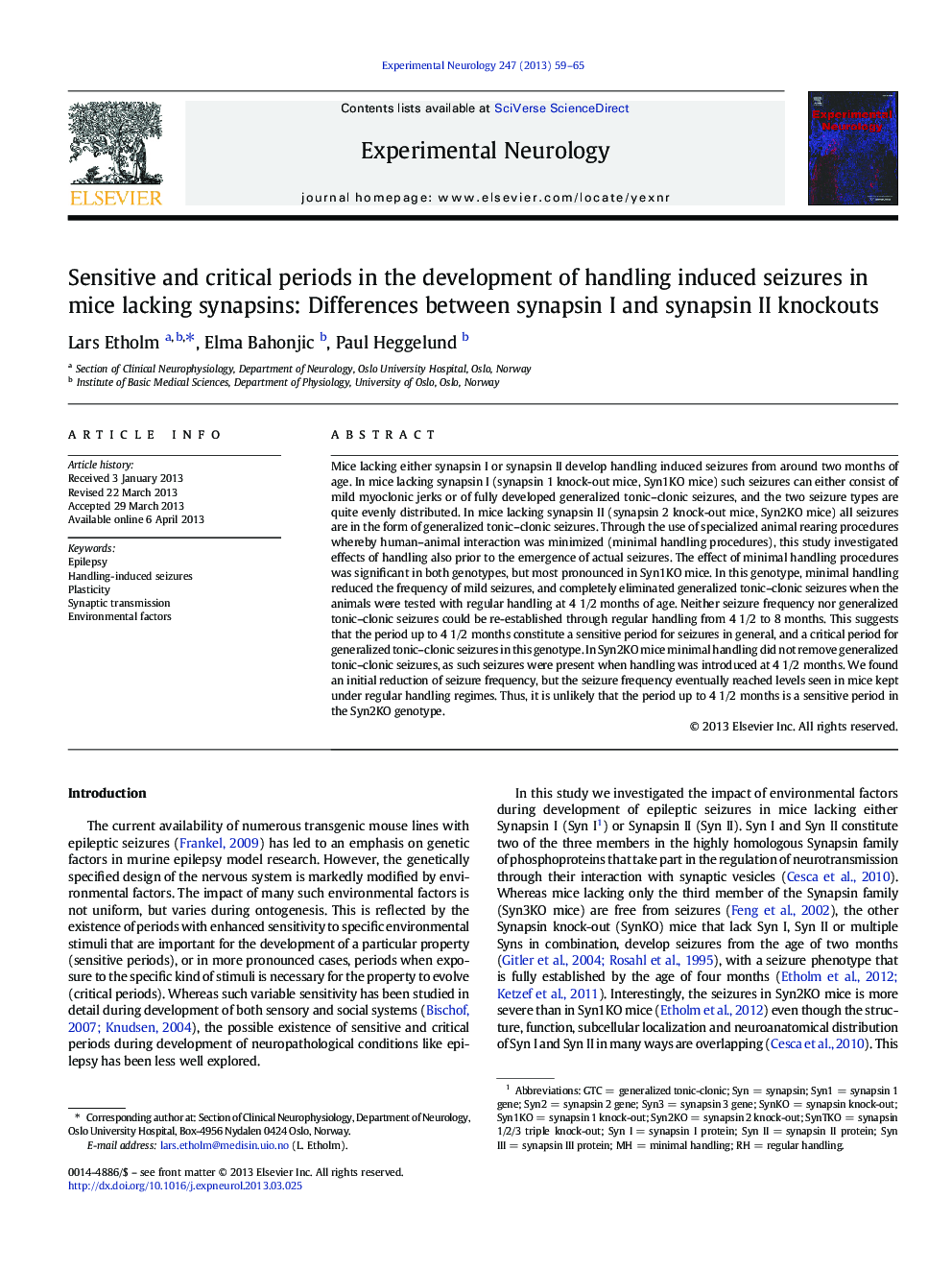| Article ID | Journal | Published Year | Pages | File Type |
|---|---|---|---|---|
| 6018244 | Experimental Neurology | 2013 | 7 Pages |
Abstract
Mice lacking either synapsin I or synapsin II develop handling induced seizures from around two months of age. In mice lacking synapsin I (synapsin 1 knock-out mice, Syn1KO mice) such seizures can either consist of mild myoclonic jerks or of fully developed generalized tonic-clonic seizures, and the two seizure types are quite evenly distributed. In mice lacking synapsin II (synapsin 2 knock-out mice, Syn2KO mice) all seizures are in the form of generalized tonic-clonic seizures. Through the use of specialized animal rearing procedures whereby human-animal interaction was minimized (minimal handling procedures), this study investigated effects of handling also prior to the emergence of actual seizures. The effect of minimal handling procedures was significant in both genotypes, but most pronounced in Syn1KO mice. In this genotype, minimal handling reduced the frequency of mild seizures, and completely eliminated generalized tonic-clonic seizures when the animals were tested with regular handling at 4 1/2Â months of age. Neither seizure frequency nor generalized tonic-clonic seizures could be re-established through regular handling from 4 1/2 to 8Â months. This suggests that the period up to 4 1/2Â months constitute a sensitive period for seizures in general, and a critical period for generalized tonic-clonic seizures in this genotype. In Syn2KO mice minimal handling did not remove generalized tonic-clonic seizures, as such seizures were present when handling was introduced at 4 1/2Â months. We found an initial reduction of seizure frequency, but the seizure frequency eventually reached levels seen in mice kept under regular handling regimes. Thus, it is unlikely that the period up to 4 1/2Â months is a sensitive period in the Syn2KO genotype.
Related Topics
Life Sciences
Neuroscience
Neurology
Authors
Lars Etholm, Elma Bahonjic, Paul Heggelund,
